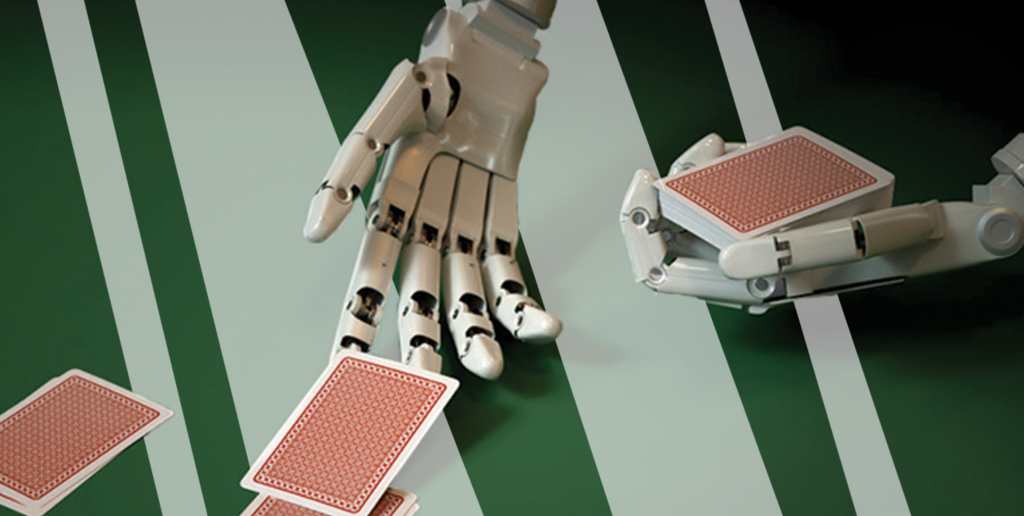
This time we will discuss a slightly different article, where the authors aim to create suitable rules for poker based on deep-learning program algorithms. After the artificial intelligence Claudico and Libratus games, it was observed that their strongest part is solving river situations. The authors of the article aim to examine the decisions made by the programs on the river and create understandable rules.
For this experiment, two identical artificial intelligences were written, which had no pre-existing rules except for an understanding of card strength. Such conditions allow for the discovery of new ways to solve poker situations, as regular players' knowledge is not included. The programs learned only from each other, playing 100,000 Heads-Up No-Limit games.
However, the authors somewhat limited the game's possibilities, so the conclusions should be taken with some caution. The additional game restrictions were as follows:
- Hands are analyzed based on their and the opponent's strength in river situations percentage-wise (i.e., how much of the opponent's range is beaten).
- Only river situations are solved. This restriction does not change much due to the first restriction.
- Only check/call and check/fold are analyzed. Probably the most changing restriction, as donk and raise situations are excluded.
- The game is played with a variable 10-card deck. This restriction essentially changes nothing due to the second and first restrictions, only reducing the decision tree.
- In-position play is analyzed.
After 100,000 simulations, the learned game was observed, which is presented in a complex decision tree:

The authors derive two main rules from the artificial intelligence game:
- If the hand beats 20% to 80% of the opponent's hands on the river, a check back or a small sizing is usually made.
- If the hand beats 95% of the opponent's hands on the river and the opponent has at least 10% very strong hands, an all-in is made.
These rules are more suitable for short-stacked play, but the idea can be maintained. Taking thin value on the river often won't bring much profit due to the possibility of being beaten. Meanwhile, when you have at least the second strongest hand on the river and the opponent has strong hands in their range in such a situation, you can bet more than the pot or go all-in. Of course, in games where there are more than 50 BB stacks, you will often not need to shoot all-in.
A few side notes from the decision tree – the artificial intelligence almost never goes to showdown (does not check back) if their hand does not beat 16% of the opponent's hands. Usually, these will just be weak high cards. In such a case, they bet at least half the pot. In other situations, the artificial intelligence chooses very variable bet sizing. One commonality arises only from strong value play – if they have a strong hand, they almost always bet at least pot bet sizing.
Of course, the artificial intelligence game has many limitations, so these rules should not be taken blindly. In most cases, we will be playing against weaker or medium-strength regular players, not super-GTO top-level poker masters. These rules should be kept in mind, but it should be remembered that exploitative play will always bring more profit.





